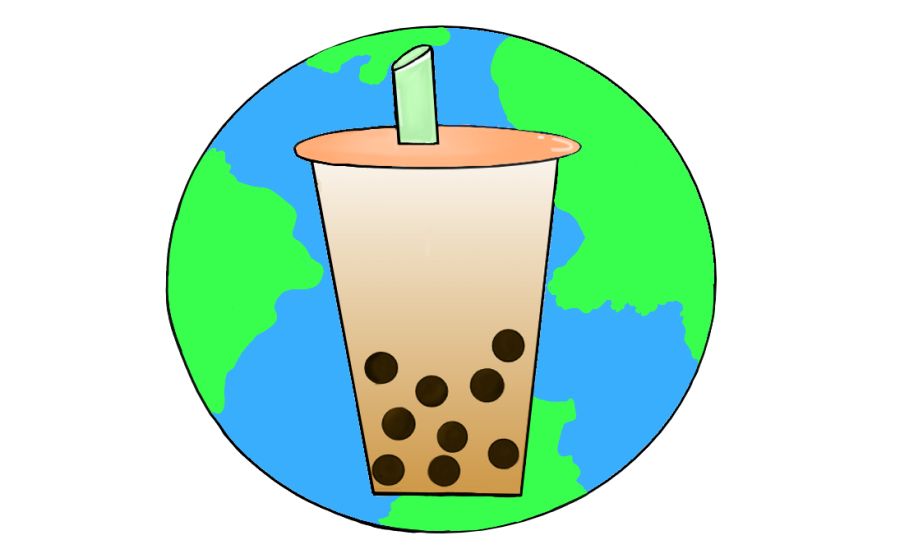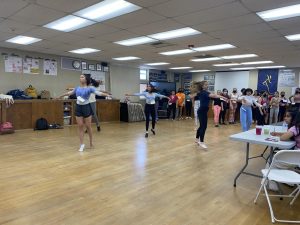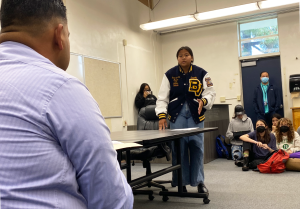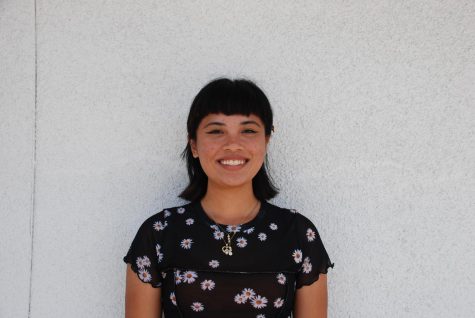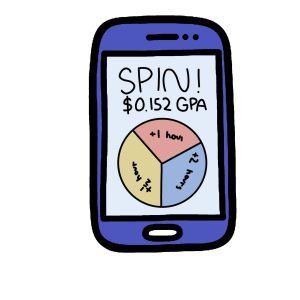The tea on boba
Bubble tea bursts cultural boundaries
May 7, 2022
“With boba.” A phrase iterated by customers of boba shops all across the nation. Regardless of the flavor of smoothie, tea or coffee, this chewy add-on is enjoyed in almost any drink. Bonita Vista High (BVH) neighbors two chain cafes specializing in boba: Lollicup Tea Zone and Tapioca Express. Given this vicinity, it is common to see BVH students enjoying these versatile drinks.
Originating from Taiwan in the 1980s, boba are small, chewy, brown pearls often added to different flavors of milk tea. They are most often used in pearl or tapioca tea. Boba is made from tapioca starch and stewed in a brown sugar syrup leaving the pearls with a sweet taste. These boba drinks, or bubble tea, have recently grown in popularity. Bubble tea is estimated to be worth 4.3 billion US dollars by 2027.
“I have noticed that the demographic has widened on an ethnically diverse scale; whereas before, the majority of customers included those coming from an Asian background. Now our clientele is of all ethnicities,” Bobatender Lia Silva said.
Silva is a barista at the Lollicup Tea Zone on the corner of Otay Lakes Road and East H street. The branch is managed by the Phan family who operate under the Lollicup Tea Zone name and products. Having worked there as a “bobatender” for 10 months, Silva has noticed a recent trend in the consumption of bubble tea.
Though there has been a recent growth in its popularity, Bubble tea has long been a staple of Asian American culture. As an influx of Taiwanese immigrants moved to the U.S from the 60’s and 90’s, settling largely in California, they brought with them the bubble tea we know today. Senior Henry Tang explains how tea is a significant part of his culture and family.
“Boba and milk teas in general are a way for people to enjoy tea. For people in our age range, especially non-asian people, they haven’t been exposed or experienced tea,” Tang said. “It’s a level of understanding of what drinking tea is like, and that’s a big part of my culture and family. A lot of different cultures around the world also drink tea.”
Often bubble tea shops offer more than just boba, like different activities or board games allowing customers to bond. For fans of bubble tea, boba shops are a comfortable place to frequent and concentrate on school work. Junior EJ Bagaporo finds the environment a reason why they like to visit Lollicup Tea Zone.
“Comparing it to Tapioca Express or other places in Convoy, I don’t have the history with it. This feels a lot more homey because I recognize all of the surroundings,” Bagaporo stated.
Bubble tea shops create a comfortable atmosphere that attracts customers, as evidenced by the recent trend in “boba culture.” Similar to Bagaporo, Silva was drawn to work at Lollicup Tea Zone because of its genuine environment.
“I decided to work at Lollicup because the Phans are a great family. The environment they have built and maintained all these years with loyal customers who have been coming here since they were kids, [who] are now bringing their own kids here too, means something to people,” Silva expressed.
Social media can be credited for the recent increase in boba consumption. As influencers and bubble tea shops use social media to promote their aesthetically pleasing products, boba culture has reached people outside of the Asian American community.
“I think a lot, not just boba, but ethnic foods have been put in the spotlight by TikTok, Twitter and Instagram. A lot of Asian communities I know of have loved boba for years and it has expanded a lot through social media,” Bagaporo notes.
With social media and the greater popularity of East Asian culture and media, Asian Americans are becoming more empowered to share their culture with others. This greater cultural exchange is what Silva accredits for the recent trend in boba culture.
“The recent trend of drinking boba has occurred because people who grew up with boba being a part of their life are sharing the experience with their friends, as well as the overall rise in Asian culture appreciation with Kpop also gaining popularity and recognition,” Silva said.
While there are certain harms brought about by grouping all Asian ethnicities into one greater “Asian American” culture, rather than recognizing their unique traits, the rise of boba culture exemplifies a greater phenomena of Asian American pride. Especially at BVH where 11 percent of students identify as Asian, Asian American solidarity is a recent development observed by Tang.
“Generally Asian American voices have become more empowered. The rise of East Asian and foreign media consumption is more voice to Asian American culture which includes boba tea,” Tang explains. “Especially since 2020, people have realized that Asian Americans are a real part of American society. Not only is it just ‘oh this is a good product’ but also people realize that East Asia and Asian Americans have a lot to offer.”

